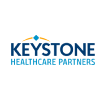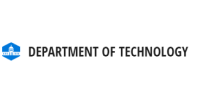OnStrategy has been collaborating with Wipfli, a top-20 accounting and business consulting firm. In June, we conducted the strategic plan stress test assessment to determine whether and how organizations are adapting to the ‘next normal’ brought on by the worldwide pandemic. We’d like to share a few of the key learnings that we hope will help your organization thrive.
First, a little background on the strategy stress test assessment:
- 551 respondents from literally around the world completed the assessment in June 2020.
- 86% were organizations with <$100M annual revenue.
- Respondents were a broad representation of industries from professional services to non-profits, healthcare, and financial services.
We characterized recovery in three phases:
Responding – Managing for continuity, reacting to a sudden disruption, keeping essential services operating, and ensuring safety and systems are addressed. Thirty-five percent of the organizations that took the assessment characterized themselves as Responding.
Recovering – Learning what the new circumstances are and considering the opportunities and how your organization must/should adapt. Forty-one percent of respondents felt they were in this phase.
Thriving – Preparing for the ‘next normal’ by putting in place long-term strategies and shifts to be successful for the next 3 years or longer. Eighteen percent of respondents characterized their organizations as Thriving.
Four Facets Required to Thrive
There are four facets that indicate readiness for the next normal: culture, people and skills, processes and procedures, and technology. Have each of these ‘right’ and your organization is more able to quickly recover from setbacks. Also:
- Thriving organizations are significantly more likely to have the culture, technology, and processes needed to thrive in the next normal.
- Conversely, those organizations who were still in the Responding phase generally feel they lack the culture, technology, and processes to thrive in the next normal, but they feel very confident in the organization’s people and their skills needed to get to the point where they’re thriving in the next normal.
- Large organizations feel more ready in terms of technology, but less ready when it comes to having the people and skills needed to thrive in the next normal.
Business Model Changes
Half of the organizations who took the assessment changed their business model as a result of COVID-19; of those that changed their business model, an equal number changed how they deliver their products and services as well as changed both how and what they deliver.
Interestingly, of the remaining organizations that haven’t yet changed their business model, a majority anticipate doing so in the next 12 to 18 months.
Strategic Shifts
About half of the organizations feel their executive teams know what strategic shifts are needed to thrive in the next normal. But organizations larger than $100M in annual revenue, and organizations that considered themselves to still be in the Recovery phase, were less likely to feel their executive teams know what shifts are needed.
Key Lessons from Recovering Organizations
For the 41% of organizations that took the assessment and felt they were recovering from the curve balls COVID-19 has thrown their way, they had a few common practices already in place before the world turned on its ear:
Lesson #1: Contingency Plans Were Key
Most had contingency plans ready. Even if their contingency plan didn’t anticipate a pandemic, their plans were adaptable, enabling their organization to get up-and-running again sooner.
Lesson #2: Communication Wins the Game
Communication is intentional and 2-way. When COVID-19 hit, changes happened rapidly and, in some cases, reversed course from one day to the next. Having the infrastructure and systems in place to support regular, proactive communication with employees, including rationale for decisions, was critical for recovering organizations to rebound so quickly.
Lesson #3: Technology is More Important Than Ever
From what we know now, this seems like a no-brainer, but recovering organizations were able to rebound quickly if they had already invested in the technology needed to support a rapid transition.
In fact, most recovering organizations were investing in technology because they saw technology as a means to improve quality and efficiency, regardless of the sudden work-from-home shift most organizations had to make.
Lesson #4: Strategies Must Adapt
Those organizations that had strategic plans in-place, but not in the inflexible, traditional multi-year-roadmap-form were able to respond and recover more quickly. Those organizations that had an agile, adaptable strategy were able to respond and shift more quickly and take advantage of unforeseen opportunities COVID-19 presented.
In fact, about one-half of Thriving organizations have already adopted agile planning and one-third are planning to do so in the near future.
In addition, the majority of Recovering and Thriving organizations were monitoring key health metrics on a weekly basis.
Tips from Thriving Organizations
In addition to all of the above lessons, Thriving organizations credited the following for their ability to quickly capitalize on opportunities presented by COVID-19:
Embrace Remote Work
Several of the Thriving organizations made the shift to partial or full remote work permanent because they saw it as a more efficient and productive way for their teams to work.
Stay Focused On Your Vision
Thriving organizations didn’t change their vision, they adapted the approach or strategies for achieving their vision. It should be noted that several organizations cited the key success factor of having a clear, unifying vision that their teams understood and embraced.
Seize the Opportunities
Most Thriving organization felt that this sudden disruption was a great time to make big changes. Several described this as being optimistic or being a “glass half-full leader.”
Culture, Culture, Culture
Thriving organizations credited having a strong culture and sticking with their core values as significant reasons why they were able to rebound and ultimately thrive so quickly. These organizations felt that because of the backbone of a strong culture, they’ve been able to keep their teams engaged and motivated during disruptive change.
Opportunities
Three-quarters of the organizations that took the assessment have realized at least some opportunities as a result of COVID-19 with organizations smaller than $100M revenue/year being more likely to have realized significant opportunities. The most-mentioned opportunities:
- Online business model. Not surprisingly, many of the opportunities were related to how organizations deliver their products or services: from traditional, retail or bricks-and-mortar to online delivery.
- Customer retention. Keeping customers shifted from being an after-thought to a cost-effective way to protect revenue. Organizations got very creative with incentives to existing customers and it paid off with longer commitments and even expanded contracts.
- New markets. Call it survival of the fittest, but a number of organizations have been able to capture new markets or customers because their competitors were not as well-prepared to pivot. Furthermore, where organizations had been previously focused on out-of-market growth, several thriving organizations credit shifting their focus to more local markets for replacing lost revenue.
- Strategic Alliances. The flip-side of capitalizing on competitors being unprepared is that some organizations partnered with competitors or vendors, in effect creating the rising tide so both can thrive.
What to do next
OnStrategy and Wipfli believe we can learn from each other as organizations adapt to the next normal. We also recommend:
- Adapt your long-term strategy. Ensure your mission and core values communicate a strong sense of purpose; determine what temporary ‘ways of working’ you’ll make permanent; shift your value proposition to accommodate changing customer needs and expectations.
- Shift to agile planning. Focus on health metrics on a weekly basis (we call them MetricMondays) instead of just annual KPIs; define a clear vision of the future to replace a lofty, vague vision; replace annual plans with quarterly results so that you can quickly adapt.
- Build a change management strategy. Establish a methodology now, before the next unanticipated disruption comes; understand the strengths you can leverage and the weaknesses that might limit change management in your organization; develop change management competencies across your organization so that everyone has a role to play and build a change network within your organization.
If we can all thrive in the next normal, organizations will be able to focus on more than just keeping afloat–they’ll be able to make a positive impact in the world.












